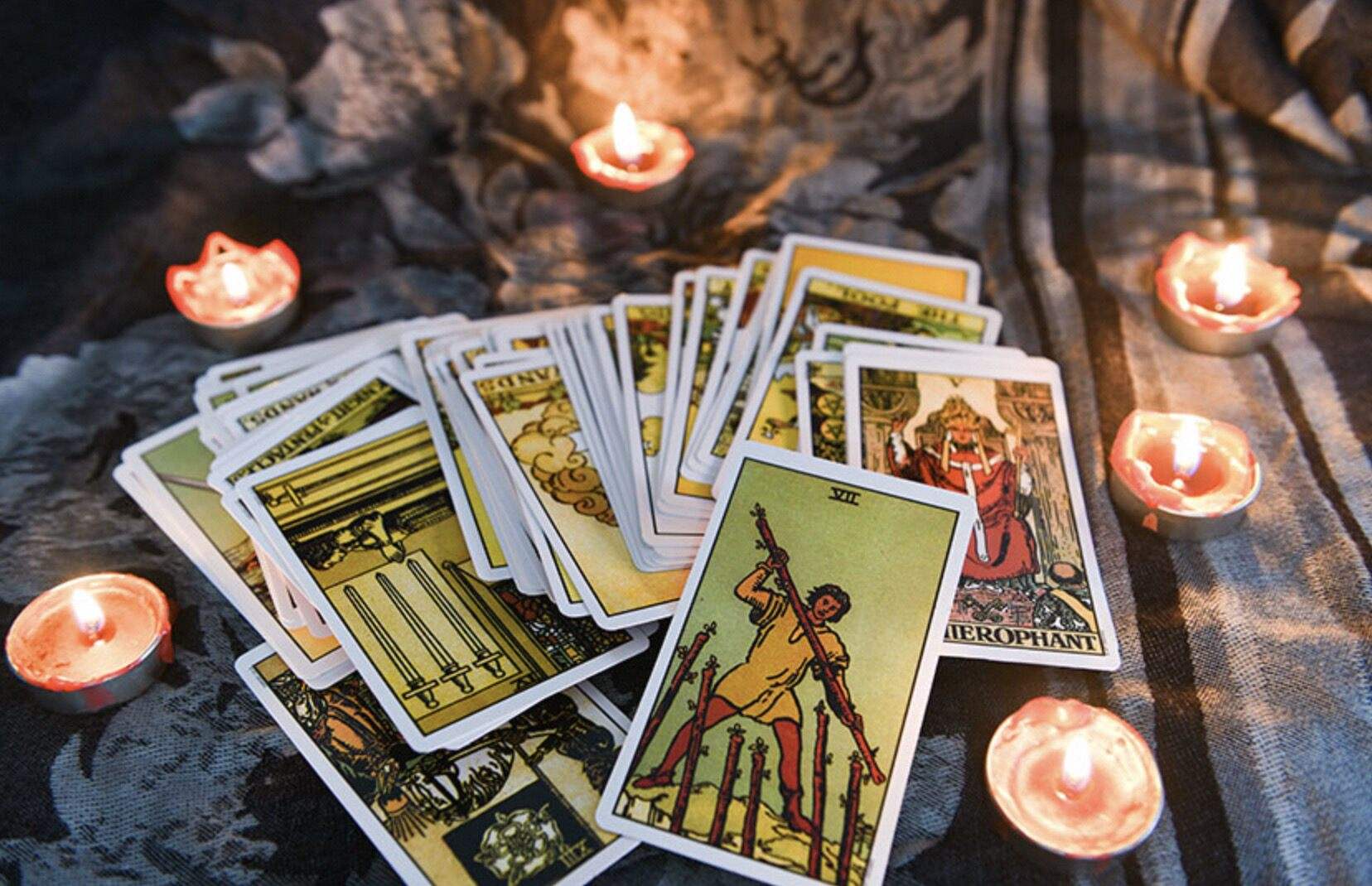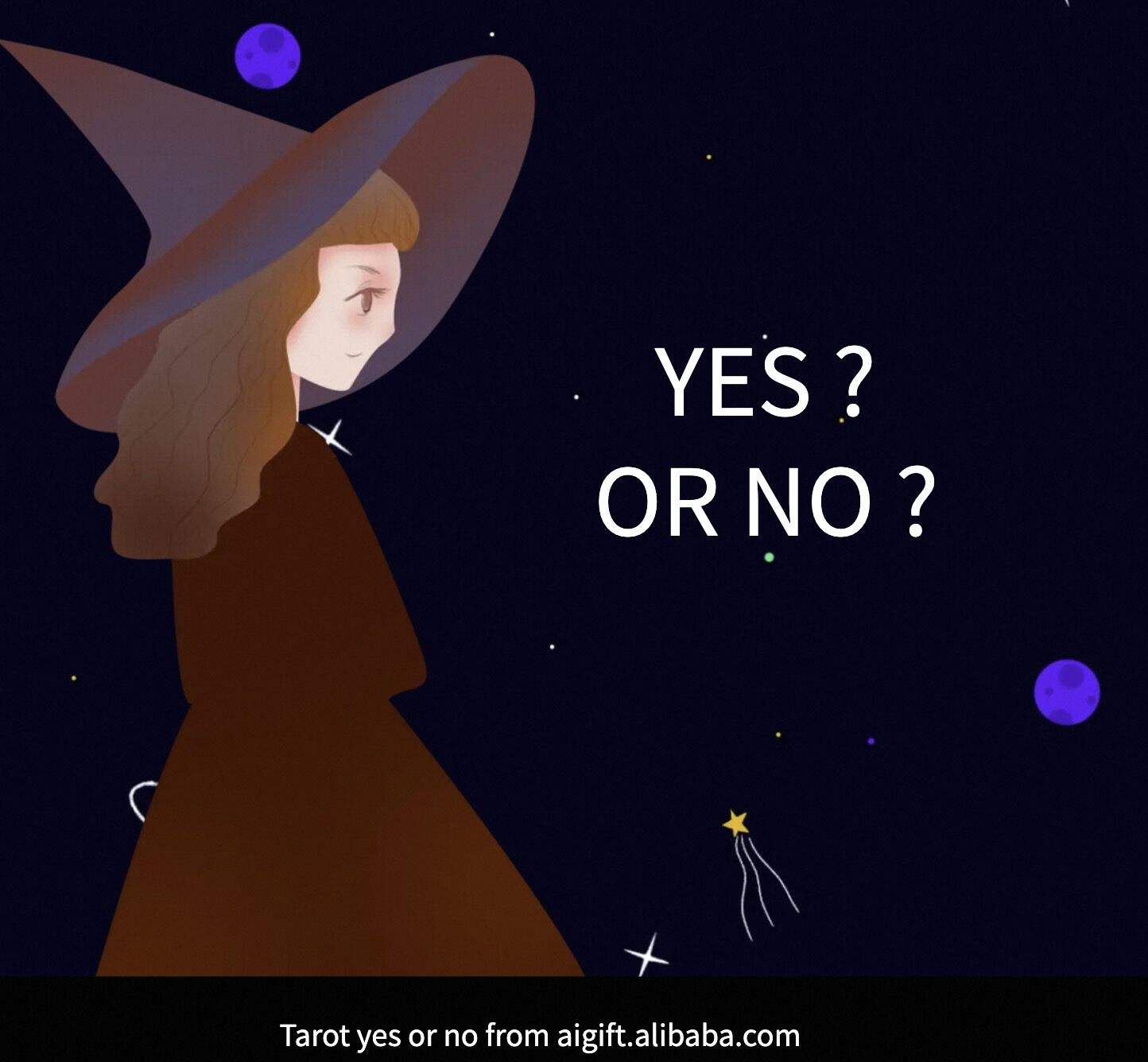Free Accurate Simple Yes or No Tarot
If you need a simple, straightforward answer. Get a 'yes' or 'no' answer with this free tarot reading from aigift.alibaba.com!
We will also launch 3-card yes or no and multiple card layouts.But you can begin with this 'yes or no pick a card'
Now think about your question and pick a card.

The history of tarot cards,what are tarot cards
The history of tarot cards is both fascinating and complex, tracing back to the 15th century in Europe. Originally, tarot cards were not designed for divination or fortune-telling. Instead, they began as a playing card game called "tarocchi" in Italy. Historical records indicate that the earliest decks were created in the northern Italian cities, with cards adorned with intricate designs and rich imagery, reflecting the artistic culture of the time.
It wasn’t until the late 18th century that tarot cards began to be associated with mysticism and occult practices. The transformation from a game to a tool of divination emerged significantly due to the work of individuals like Antoine Court de Gébelin, a French mystic, who published a book in 1781 entitled “Le Monde Primitif.” In this book, he posited that tarot cards held ancient Egyptian wisdom, thus linking the cards to a lineage of esoteric knowledge. This interpretation fueled a widespread interest in tarot as a means of divination.
Throughout the 19th century, tarot’s association with the occult grew, driven by the rise of various spiritual movements, including theosophy and the Golden Dawn, a magical order that emphasized the spiritual dimensions of the tarot. During this time, distinct decks, such as the Rider-Waite-Smith tarot, were created, featuring rich symbolism designed to aid in the interpretation of the cards' meanings. The Rider-Waite-Smith deck, published in 1910, has since become one of the most popular and widely used tarot decks in the world.
As the 20th century progressed, tarot evolved further, integrating principles from psychology and spirituality. Influenced by figures such as Carl Jung, tarot cards began to be used as tools for self-reflection and personal growth. Today, tarot is embraced by many as a tool for insight and guidance, merging centuries of tradition with contemporary spirituality. The history of tarot is a testament to its enduring mystique and its ability to adapt to the evolving contexts of human understanding.

What is Yes or No Tarot
Yes or No Tarot is a simplified form of tarot reading that provides direct answers to specific questions, typically framed in a yes or no format. Unlike traditional tarot readings that explore deeper insights, themes, and narratives, the Yes or No Tarot focuses on offering clear guidance.
In this approach, individuals usually draw a card (or multiple cards) from a tarot deck while concentrating on their question. The interpretation of the drawn card(s) is then used to determine whether the answer to the question is affirmative (yes) or negative (no). Some readers may use specific card meanings, while others might apply additional interpretations based on the card's position or surrounding context.
This method is popular for its straightforwardness and is often used for quick decision-making or clarifying doubts. It's essential to remember that while Yes or No Tarot can provide guidance, it should not replace thoughtful consideration or professional advice regarding important life decisions.

How to Read Tarot Cards: A Beginner's Guide
Tarot card reading is an ancient practice that has captivated people for centuries. Whether you're seeking guidance in decision-making, personal growth, or insight into your future, learning to read tarot can be a rewarding experience. Here’s a concise guide to help you get started.
1. Understand the Deck Structure
A traditional tarot deck consists of 78 cards, divided into the Major Arcana (22 cards) and Minor Arcana (56 cards). The Major Arcana cards represent significant life events and deep spiritual lessons, while the Minor Arcana explores daily experiences and challenges. The Minor Arcana is further divided into four suits—Cups, Pentacles, Swords, and Wands—each symbolizing different aspects of life, such as emotions, material matters, thoughts, and creativity.
2. Familiarize Yourself with the Cards
Before reading, take time to study each card. While there are standard meanings associated with each, your personal interpretation is crucial. Spend time with the cards, meditate on them, and observe how they resonate with you. Keeping a journal can help consolidate your understanding and record insights over time.
3. Choosing a Spread
A tarot spread is an arrangement of cards that helps structure your reading. The most common spreads include the three-card spread, which represents the past, present, and future, and the Celtic Cross, which offers deeper insights. Choose a spread that aligns with your question or intention.
4. Formulate Your Question
Clarify what you want to explore through your reading. Open-ended questions often yield more profound insights compared to yes/no inquiries. For instance, instead of asking, “Will I get a new job?” consider, “What steps can I take to find a fulfilling job?”
5. Intuitive Interpretation
When you lay out the cards, take a moment to absorb the imagery and feelings they evoke. Start by interpreting individual cards, then consider how they relate to each other within the spread. Trust your intuition—sometimes, the meanings may differ from traditional interpretations based on the context of your question.
6. Conclude Your Reading
Once you’ve interpreted the cards, summarize the insights you've gained. Consider how you can apply this wisdom to your life. Reflect on the reading process and your feelings, as this will enhance your skills over time.
Reading tarot cards can be a personal journey of exploration and understanding. Embrace the process with an open heart and mind, and you'll find that the cards have much to teach you. Happy reading!
How many cards in a tarot deck
Major Arcana
- The Fool Card
- The Magician Card
- The High Priestess Card
- The Empress Card
- The Emperor Card
- The Hierophant Card
- The Lovers Card
- The Chariot Card
- Strength Card
- The Hermit Card
- Wheel of Fortune Card
- Justice Card
- The Hanged Man Card
- Death Card
- Temperance Card
- The Devil Card
- The Tower Card
- The Star Card
- The Moon Card
- The Sun Card
- Judgment Card
- The World Card
Minor Arcana - Cups
- Ace of Cups
- Two of Cups
- Three of Cups
- Four of Cups
- Five of Cups
- Six of Cups
- Seven of Cups
- Eight of Cups
- Nine of Cups
- Ten of Cups
- Page of Cups
- Knight of Cups
- Queen of Cups
- King of Cups
Minor Arcana - Pentacles
- Ace of Pentacles
- Two of Pentacles
- Three of Pentacles
- Four of Pentacles
- Five of Pentacles
- Six of Pentacles
- Seven of Pentacles
- Eight of Pentacles
- Nine of Pentacles
- Ten of Pentacles
- Page of Pentacles
- Knight of Pentacles
- Queen of Pentacles
- King of Pentacles
Minor Arcana - Swords
- Ace of Swords
- Two of Swords
- Three of Swords
- Four of Swords
- Five of Swords
- Six of Swords
- Seven of Swords
- Eight of Swords
- Nine of Swords
- Ten of Swords
- Page of Swords
- Knight of Swords
- Queen of Swords
- King of Swords
Minor Arcana - Wands
- Ace of Wands
- Two of Wands
- Three of Wands
- Four of Wands
- Five of Wands
- Six of Wands
- Seven of Wands
- Eight of Wands
- Nine of Wands
- Ten of Wands
- Page of Wands
- Knight of Wands
- Queen of Wands
- King of Wands
Common Misconceptions and Beliefs About Tarot
Tarot has been a subject of fascination and intrigue for centuries, yet it remains surrounded by numerous misconceptions and misunderstandings. One prevalent belief is that tarot cards are inherently mystical or supernatural tools that possess the power to predict the future with absolute certainty. While tarot readings can provide insight and guidance, they are not strictly about fortune-telling. Instead, they are a means of tapping into the subconscious mind, reflecting on personal situations, and exploring potential outcomes based on current choices. The cards act as a mirror, helping individuals understand their thoughts, feelings, and motivations more clearly rather than offering definitive prophecies.
Another common misbelief is that tarot readings should be conducted by a "gifted" reader who possesses supernatural abilities. In reality, anyone can learn to read tarot cards with practice and study. The key lies in developing a deep understanding of the symbolism within the cards and how they interact with one another. A successful tarot reader is not necessarily someone with extraordinary powers, but rather an individual skilled in interpreting the nuanced meanings and connecting them to the querent's life.
Moreover, some people believe that tarot is linked to negative energies or that it's a tool of divination that invites bad luck or harm. This fear often stems from a misunderstanding of the tarot's origins and purpose. While it is indeed a tool for introspection, many practitioners view it as a pathway to empowerment and self-awareness. By focusing on positive intentions, the use of tarot can cultivate personal growth and insight rather than invite negativity.
Additionally, there is a misconception that tarot must always follow rigid structures and traditional spreads. While these established layouts can provide a good framework, many readers adapt their methods to fit their intuitive styles and the specific needs of each inquiry. The versatility of tarot is one of its greatest strengths, allowing for creativity and personal expression in readings.
In conclusion, dismantling these misconceptions allows for a deeper appreciation of tarot as a valuable tool for reflection and personal development. Embracing its potential to foster insight can lead individuals to a greater understanding of their lives and the choices they face.
Understanding Tarot Card Spreads
A Tarot spread is a specific pattern or layout in which the cards are placed during a reading. The positions in a spread each have a designated meaning, and the cards drawn for those positions provide insights and answers to the querent's (the person receiving the reading) questions. Different spreads are suited for different types of inquiries, from simple yes-or-no questions to complex life situations.
1. The Celtic Cross Spread
The Celtic Cross Spread Purpose
The Celtic Cross is one of the most popular and versatile spreads, providing a comprehensive overview of a situation. It is ideal for gaining deep insights into a specific question or issue.
The Celtic Cross Spread Layout
- Card 1 (The Present): What is currently happening.
- Card 2 (The Challenge): The immediate obstacle or challenge.
- Card 3 (The Past): Influences from the past.
- Card 4 (The Future): Likely outcomes if the current path is followed.
- Card 5 (Above): Higher influences or aspirations.
- Card 6 (Below): Underlying factors or subconscious influences.
- Card 7 (Advice): Guidance or advice.
- Card 8 (External Influences): Factors outside the querent's control.
- Card 9 (Hopes and Fears): The querent's hopes and fears.
- Card 10 (Outcome): The likely result if the situation continues as is.
The Celtic Cross Spread Interpretation
Look at the overall narrative formed by the cards.
Consider the relationships between the cards, especially those that are adjacent or directly related (e.g., Past and Present, Present and Future).
Pay attention to the balance between positive and negative cards, and how they interact with each other.
2. The Three-Card Spread
The Three-Card Spread Purpose
This simple yet powerful spread is perfect for quick, focused readings. It can be used for a wide range of questions, from daily guidance to more specific inquiries.
The Three-Card Spread Layout
- Card 1 (Past): Influences from the past.
- Card 2 (Present): Current situation.
- Card 3 (Future): Likely outcome.
The Three-Card Spread Interpretation
Focus on the progression from the past to the present and into the future.
Look for patterns or themes that emerge across the three cards.
Consider how the past has shaped the present and how the present will influence the future.
3. The Relationship Spread
The Relationship Spread Purpose
This spread is designed to provide insights into romantic, platonic, or professional relationships. It helps to understand the dynamics, challenges, and potential growth within the relationship.
The Relationship Spread Layout
- Card 1 (You): Your role and feelings in the relationship.
- Card 2 (Other Person): The other person's role and feelings.
- Card 3 (Relationship Dynamics): The current state of the relationship.
- Card 4 (Challenges): Obstacles or issues in the relationship.
- Card 5 (Strengths): Positive aspects and strengths of the relationship.
- Card 6 (Advice): Guidance on how to improve the relationship.
- Card 7 (Outcome): The likely future of the relationship.
The Relationship Spread Interpretation
Examine the balance between the two people's roles and feelings.
Look for areas of harmony and conflict.
Consider the advice card carefully, as it often provides practical steps for improvement.
4. The Career Spread
The Career Spread Purpose
This spread is ideal for those seeking guidance on their career path, job changes, or professional development. It offers a detailed look at the current situation and future prospects.
The Career Spread Layout
- Card 1 (Current Situation): Your current career status.
- Card 2 (Influences): Factors affecting your career.
- Card 3 (Challenges): Obstacles or issues you may face.
- Card 4 (Opportunities): Potential opportunities or paths.
- Card 5 (Your Strengths): Your personal strengths and assets.
- Card 6 (Advice): Guidance on how to proceed.
- Card 7 (Outcome): The likely future of your career.
The Career Spread Interpretation
Analyze the interplay between your current situation and the influences and challenges.
Look for ways to leverage your strengths and take advantage of opportunities.
Consider the advice card as a roadmap for your next steps.
5. The Yes/No Spread
The Yes/No Spread Purpose
This straightforward spread is used for binary questions that require a simple yes or no answer. It is particularly useful for making decisions or clarifying uncertainties.
The Yes/No Spread Layout
- Card 1 (Yes): Represents a positive or affirmative answer.
- Card 2 (No): Represents a negative or non-affirmative answer.
- Card 3 (Clarification): Provides additional context or insight.
The Yes/No Spread Interpretation
The first card drawn indicates the primary answer (yes or no).
The second card provides the opposite perspective.
The third card offers further clarification or a deeper understanding of the situation.
6. The Horseshoe Spread
The Horseshoe Spread Purpose
This spread is great for getting a broad overview of a situation, including the past, present, and future, as well as internal and external influences.
The Horseshoe Spread Layout
- Card 1 (Past): Influences from the past.
- Card 2 (Present): Current situation.
- Card 3 (Future): Likely outcome.
- Card 4 (External Influences): Factors outside the querent's control.
- Card 5 (Internal Influences): Personal thoughts and feelings.
- Card 6 (Guidance): Advice or guidance.
- Card 7 (Final Outcome): The ultimate result.
The Horseshoe Spread Interpretation
Look at the flow from the past to the future, considering how external and internal influences shape the situation.
Pay attention to the guidance card, as it often provides key insights.
Consider the final outcome in light of all the preceding cards.
7. The Chakra Spread
The Chakra Spread Purpose
This unique spread is designed to align with the seven chakras, providing a holistic view of the querent's physical, emotional, and spiritual well-being.
The Chakra Spread Layout
- Card 1 (Root Chakra): Grounding and stability.
- Card 2 (Sacral Chakra): Creativity and sexuality.
- Card 3 (Solar Plexus Chakra): Power and self-esteem.
- Card 4 (Heart Chakra): Love and compassion.
- Card 5 (Throat Chakra): Communication and expression.
- Card 6 (Third Eye Chakra): Intuition and wisdom.
- Card 7 (Crown Chakra): Spiritual connection and enlightenment.
The Chakra Spread Interpretation
Each card represents the energy and condition of the corresponding chakra.
Look for imbalances or areas that need attention.
Consider how the energies of the chakras are interconnected and how they affect the querent's overall well-being.








 浙公网安备
33010002000092号
浙公网安备
33010002000092号 浙B2-20120091-4
浙B2-20120091-4